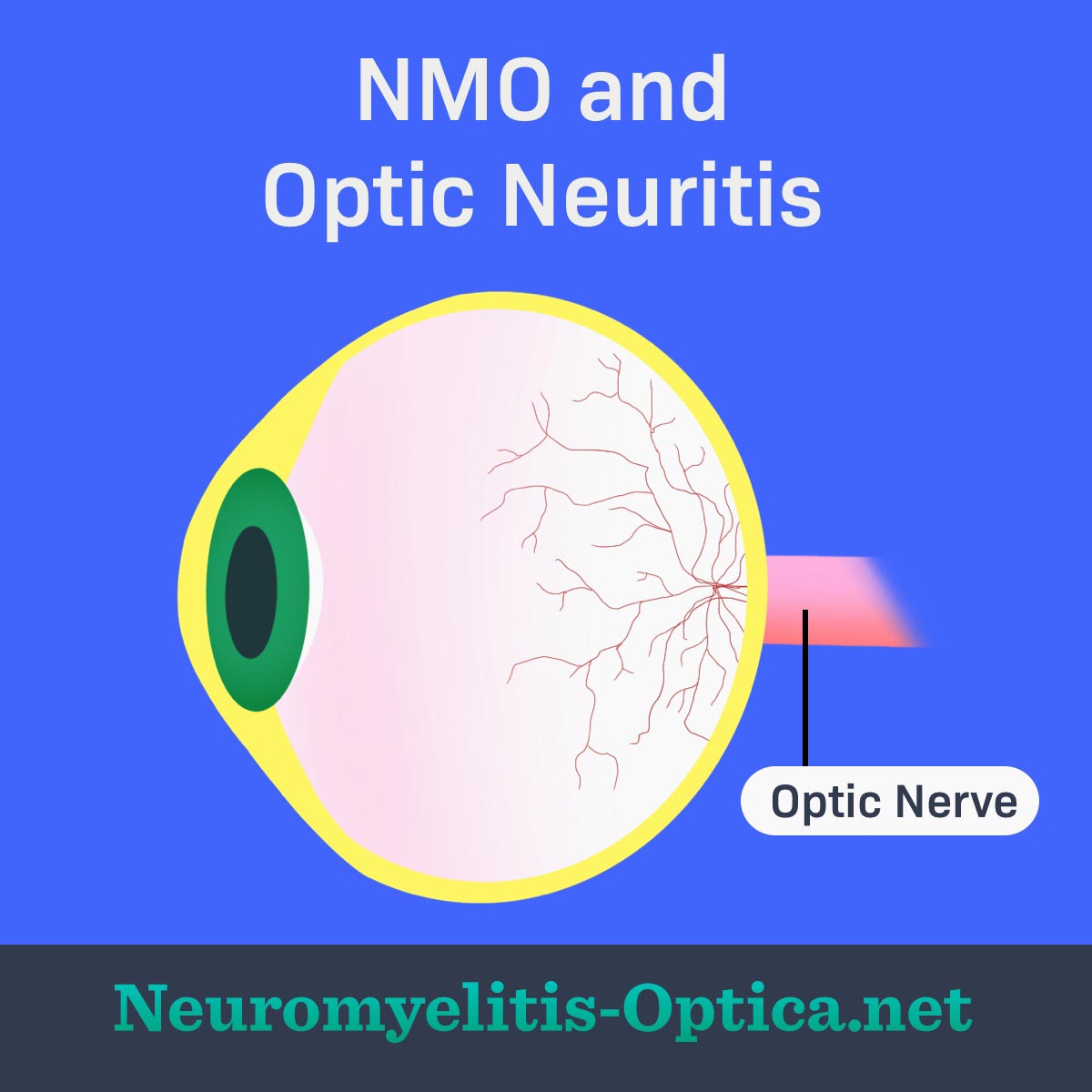Vision Issues
Reviewed by: HU Medical Review Board | Last reviewed: September 2021 | Last updated: March 2024
It may start as a throbbing headache behind 1 of your eyes – a relentless ache that gets worse when you move your eyes. You might think to yourself, Maybe I need to take a break from my computer screen. You close your laptop and shut your eyes. When you open your eyes, your vision is blurred and you cannot see color.1
For those with neuromyelitis optica spectrum disorder (NMO), this scene may be a frightening reality. Sudden, severe eye pain and loss of vision may be one of the scariest symptoms NMO can cause. If left untreated, half of those with relapsing NMO become blind in 1 or both eyes and require assistance within 5 years of disease onset. This is a disturbing truth for a condition that appears out of nowhere. The key is early diagnosis and treatment – knowing what to look for and acting quickly.2
Why do vision problems or blindness occur in NMO?
The optic nerve is a bundle of nerve fibers. It is the communication cable between your eyes and your brain. The optic nerve transmits nerve signals from the light-sensitive, inner back wall of the eye (called the retina) to the vision areas of your brain.3,4
The optic nerve, like other nerves, is covered in a protective layer called myelin. This insulating layer allows nerve impulses to be sent and received at a faster speed. NMO targets the myelin surrounding nerves, damaging it. This damage is called demyelination.3
When myelin is damaged, nerve signals slow or stop. This leads to nerve and brain problems. Inflammation to the optic nerve is called optic neuritis.3
Figure 1: A depiction of an eye in pain, as well as the anatomy of an eye.
What are the vision problems?
Optic neuritis can cause sudden eye pain or a severe headache that some describe as an ache behind the eye. Usually, this is made worse with eye movement. Optic neuritis can also cause problems with your vision or may cause complete blindness. This is usually in 1 eye but can affect both eyes. Symptoms may include:5,6
- Partial or complete blindness
- Problems seeing different colors
- Blurred or smudge-like vision
- Depth perception problems
These vision problems can be temporary or permanent. Vision loss takes many forms and varies from person to person. Sight is deeply personal and tied to independence, from personal hygiene to driving.1
What tests will confirm the problems?
You will likely see an ophthalmologist or a neuro-ophthalmologist. This is an eye doctor who is trained to diagnose and treat optic neuritis. The doctor will likely perform the following tests:6
- Routine eye exam – These check your vision (also called visual acuity) and your ability to see different colors.
- Magnetic resonance imaging (MRI) – An MRI machine uses magnetic fields but no radiation to create images of your body. This may also include an injection of a contrast dye into your vein to make the optic nerve and parts of your brain more visible on the test.
- Blood tests – Blood tests include those that check for antibodies found in many who have NMO (AQP4-IgG or MOG-IgG antibodies). Other blood tests may include those that check for infection or inflammation.
- Other tests – Other tests depend on your symptoms and the doctor you are seeing, you may have other tests done related to your vision problems.
How are eye and sight issues treated?
Treatment for optic neuritis involves decreasing the swelling on the optic nerve of the eye. This is important to preserve vision and decrease pain.6
Treatment usually involves steroids, which are strong anti-inflammatory drugs. These drugs may be taken either by IV (in a vein) or orally (by mouth), depending on the severity of your symptoms.6
If steroid therapy fails or you continue to have eye or vision problems, you may need to have more treatment. Your doctor will decide which treatment path is best for you.6
What is the outcome for altered vision in NMO?
Everyone is different. A single attack of NMO may severely impact 1 person and barely affect another. You may always have vision problems. The extent of these problems is not predictable and may change over time. Early diagnosis and treatment are key to ensure you have the best outcome possible.1
Getting the support and services you need
Even if you are facing total vision loss, it may or may not be permanent. This unpredictability is difficult emotionally. Building your emotional strength when faced with the many hurdles of NMO might be challenging. But when you are emotionally strong, the challenges you may face might seem more manageable.1
Growing your emotional strength includes finding the right balance of physical and emotional support. This support will help you prepare for the unknowns of NMO. Look to those you can count on. These people will be the structure for your support network. Support or advocacy groups, social media groups, and nonprofit organizations that support NMO research may help build your support network.7
Everyday vision tools can also make a difference. Some of these include:8
- Handheld magnifying lenses, which might be helpful when reading. Many books are also available in larger print. You can also adjust your computer screen to enlarge text in order to read it better.
- Speech-to-text software can be helpful when writing emails or letters on the computer.
- Phones with large buttons or clocks with large numbers and faces are also helpful for everyday tasks.
